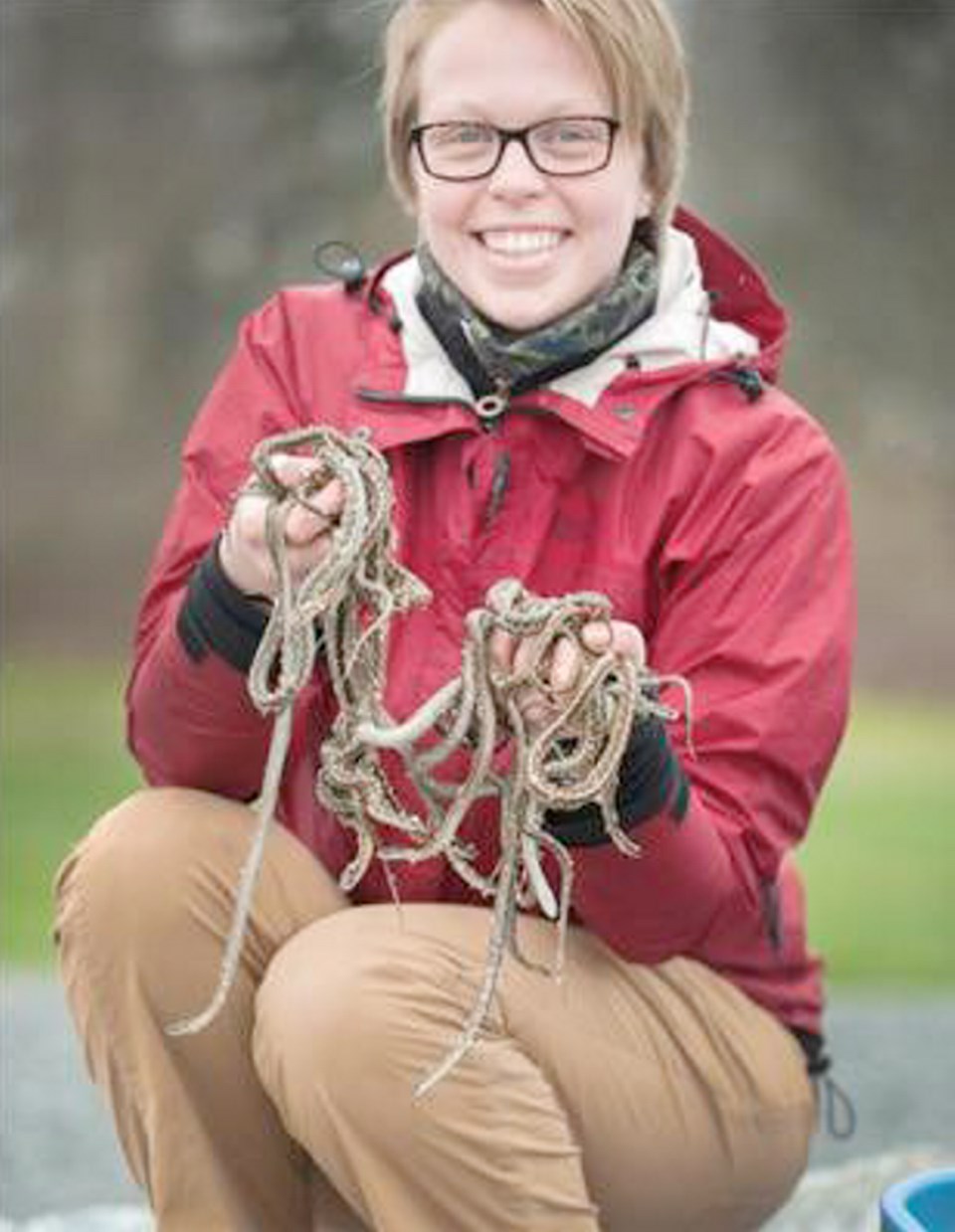The first Sunday of spring marked a hissss-storic occasion in Tsawwassen, as 500 South Delta residents slithered home.
The garter snakes had been removed from their hibernation den on the shore of Boundary Bay, to allow repair work on a rock dike.
The den of serpents was unearthed in early March, when engineering firm SNC-Lavalin was preparing to do dike upgrades on behalf of the Corporation of Delta.
SNC-Lavalin biologist Shawn Hilton said when residents notified the company of a possible snake den on the site, they didn’t expect anything quite so big.
“Honestly, we expected 20. And my co-worker, on the first day, found 20. But then, the next day, there were 300,” Hilton said.
By the third day, that total had topped 500 snakes, making this the largest discovery of its kind in B.C., according to the Wildlife Rescue Association.
The harmless reptiles were transferred to Wildlife Rescue’s facilities in Burnaby, where they resumed their hibernation for a couple of weeks, while work was completed on the dike.
Sunday morning, Wildlife Rescue workers loaded large blue plastic storage bins, each filled with wood shavings, water and snakes, into the backs of trucks and drove out to Tsawwassen in a convoy that included members of the Ministry of Environment, biologists volunteering to help with the release, and Dr. Patrick Gregory, a snake specialist from the University of Victoria who observed and advised on the release.
Erin Clement, environmental officer for the Corporation of Delta, said: ”This is a great ending — everything came together, everyone worked really well and we were able to find this amazing discovery ... Everybody’s pretty excited.”
Katie Bell, one of the biologists helping out, said she hoped the rescue effort could help increase public awareness about snakes. They aren’t the most widely loved creatures, Bell said, “like sharks and other sort of scary animals.”
Crouching on the dike, Bell unloaded handfuls of creatures from the bins, placing them on the large stone slabs to slither below, when she recognized a particular snake by its amputated tail.
“There’s Stumpy!” Bell said, as she nudged the little guy on the rock. “Hey Stumpy!”



